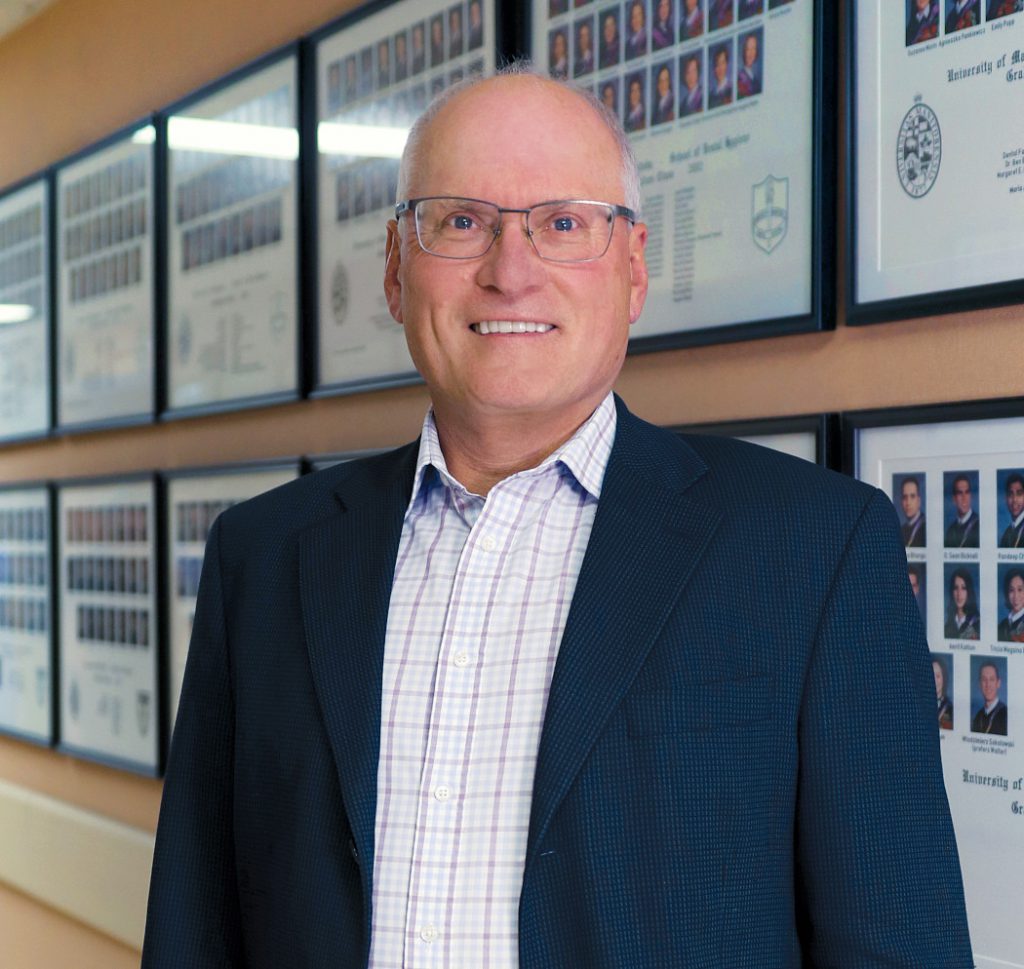If you visit a dentist or dental hygienist anywhere in Manitoba, there’s a good chance John Perry [DMD/76, M.Sc./86] was one of their teachers.
The oral pathologist has been imparting wisdom at the Dr. Gerald Niznick College of Dentistry for more than 40 years. He’s done the math, and he figures he’s seen more than 3,000 dental students, dental hygiene learners and residents earn their degrees and diplomas.

“I’ve gained great satisfaction in being part of their educational journeys and knowing that they’re excellent clinicians,” says Perry, associate dean (academic) and associate professor of dental diagnostic and surgical sciences.
Perry, who grew up in Winnipeg’s North End and Garden City neighbourhoods, graduated from the UM dental school himself in 1976.
He went on to study at Emory University in Atlanta. There he earned a 1982 certificate in oral pathology, the dental specialty focused on the diagnosis and treatment of oral diseases, including cancer.
“I became fascinated with the problem-solving aspect of diagnosing oral diseases,” he says. “I enjoy the challenge of putting together the diagnostic puzzle.”
Returning to Manitoba, Perry became a part-time assistant professor at the dental school while completing a master of science in immunology. He joined the dentistry faculty full time in 1986, maintaining a part-time practice.
For the safety of every patient, Perry says, it’s essential that dental students learn to diagnose oral diseases.
“When I was a student, the teaching of oral pathology was from books with black-and-white images. Now websites provide videos of diagnostic procedures and high-tech images and animations. It’s much more engaging.”
Over the past two decades, Perry says, dental students have made him aware of the competing demands that they must balance in their lives outside of school, such as financial, family and mental health challenges.
“As a result, I have tried to be more understanding and empathetic in my teaching style, and when dealing with student issues as the academic dean.”
In the mid-1990s, Perry, a classically trained pianist, formed a trio with a flautist and violinist who were dental students. They performed at dentistry functions, graduations and weddings.
“Those students impressed upon me the importance of maintaining interests outside the intensity of the dental college. This is something I now encourage in all my students.”
As a researcher, Perry collaborated with two other Canadian professors on an in-depth 2014 study of admissions processes at Canada’s 10 dental schools.
One of their findings was a considerable debate among dental faculty about a manual dexterity test that required applicants to make a soap carving.
“Some saw the carving test as a valid assessment tool. Others argued that the dexterity needed for dentistry can be taught in the program, and that soap-carving aptitude doesn’t predict dental skills.
“We recommended more evaluation of this test, which is currently not being used. As a result of our overall report, there’s a national working group that continues to financially support research on all selection tools and processes.”
As Perry approaches retirement at the end of 2025, he says he will miss seeing his students grow from hopeful dental school applicants into confident professionals.
“They become my colleagues,” he says. “I’ve been privileged to be part of that evolution.”
BY MATTHEW KRUCHAK
